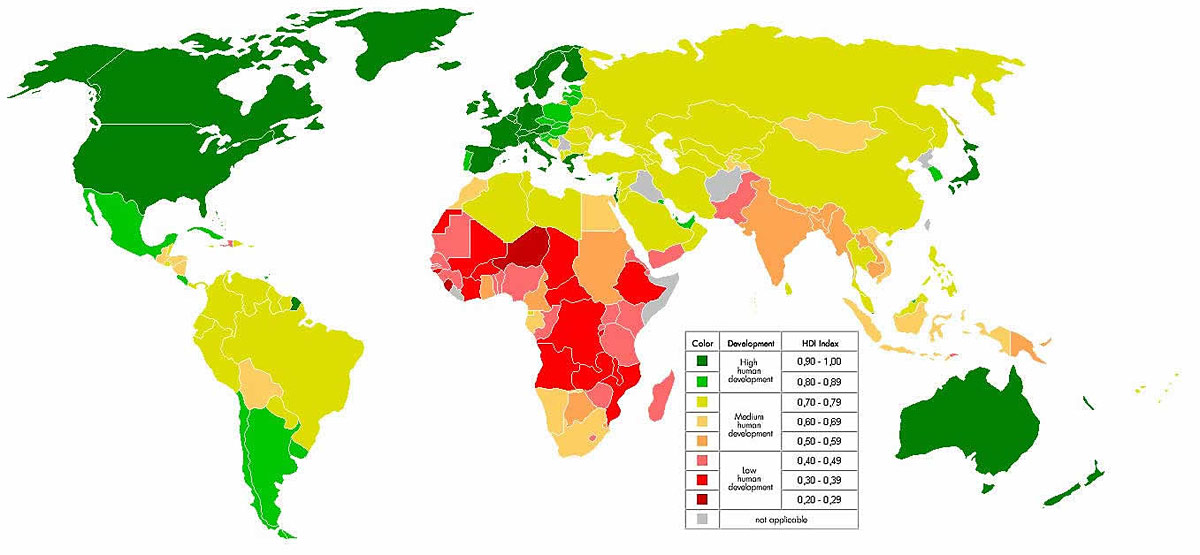The Human Development Index (HDI) developed and applied for the first time in 1990, is a device to measure a country’s or region’s achievements in the enhancement of human capabilities. This index helps in ascertaining the impact of planning on the quality of life of the people of a country.
It was realized by the various development agencies of the UNO that there is a silent crises in the world—a crises of underdevelopment, of disparity in development, of global poverty, of ever-mounting population pressure, of over-consumerism and of thoughtless degradation of resources. To overcome this crisis, it is imperative to have a long, quiet process of sustainable development.
In fact, the world can never be at peace unless people have security in their daily lives. It will, therefore, not be possible for the community of nations to achieve any of its major goals not peace, not environmental protection, not human rights or democratization, not fertility reduction, not social integration except in the context of sustainable development.
ADVERTISEMENTS:
Sustainable human development is the development that not only generates economic growth but also distributes its benefits equitably; generates the environment rather than destroying it; and empowers people rather than marginalizing them.
It is development that gives priority to the poor, enlarging their choices and opportunities, and providing for their participation in decisions that affect their lives.
It is the development that is pro-people, pro-nature, pro-jobs and pro-women. It was also stressed in the Rio Declaration (1992) that the ideals and energies of a human group/nation are vital for continuing development of the societies in which they live.
ADVERTISEMENTS:
The 1996 Human Development Report (HDR), published by the United Nations Development Programme (UNDP), states: ‘Human development is the end, economic growth a means’.
In fact, the basic objective of development is to enlarge the choices of people primarily by providing them with education, health, better nutrition, employment opportunities and social security.
In order to assess the levels of human development in different countries of the world, the HDI has been prepared. The HDI is the collaborative work of the four important international organizations: (i) World Resource Institute (WRI), (ii) United Nations Environment Programme (UNEP), (iii) United Nations Development Programme (UNDP) and (iv) World Bank (WB).
The UNDP, in its various human development reports, published since 1990, has three essential components:
ADVERTISEMENTS:
1. Equality of opportunity for all people in the society.
2. Sustainability of such opportunities from one generation to the next generation.
3. Employment of people so that they may participate in benefit from development processes.
In order to capture the combined effect of the above three components, the UNDP has developed and advocated a number of indices, viz., Human Poverty Index (HPI), Gender Development Index (GDI), Employment Index (EI) and Human Development Index (HDI). Of all these indices, the primary one and socially most relevant is the HDI. The HDI has, however, undergone some modifications in its computation from year to year, since 1990, when it was first introduced.

